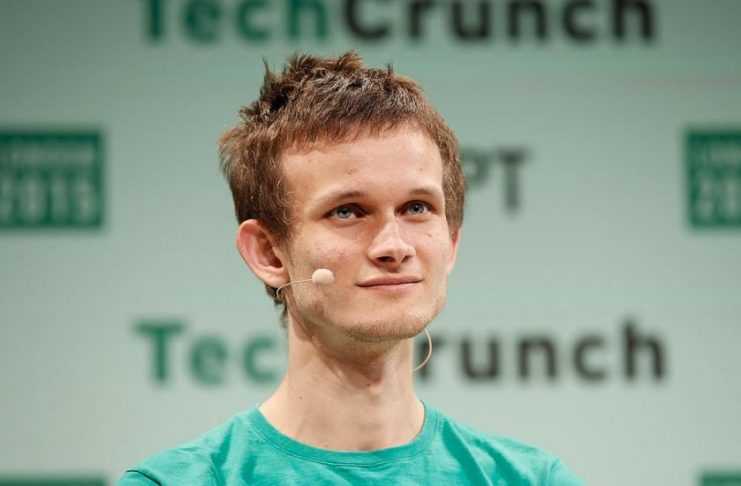On May 3, 2021, the Ether price reached $3,000 for the first time, making its creator Vitalik Buterin one of the youngest crypto billionaires at his 27. In October 2018, Buterin disclosed an address as his main Ethereum wallet with more than 333,521 ETH. But on May 12, 2021, he moved $1.3 billion worth of ETH from this address to a separate wallet.
Ethereum has secured second place in the cryptocurrency market by market capitalization for almost five years (losing to XRP a few times for a short time). In September 2017, Ethereum came closest to being called the number 1 cryptocurrency because then Ethereum’s dominance almost caught up with Bitcoin.
Today, many of the world’s known corporations like Microsoft, IBM, and Walmart are doing projects on the Ethereum platform. And Vitalik Buterin is considered one of the most influential minds not only in the cryptocurrency industry but also of our generation. But how did he do it? Here is a brief success story of Vitalik Buterin and Ethereum.
How Did Cryptocurrency Become A Passion For Buterin?
From childhood, Buterin was known as a boy-genius due to his predisposition to math and programming. He could add three-digit numbers in his head twice as fast as the average person his age. Also, he showed an early interest in economics and was placed in a program for the gifted in Canadian primary school.
At the age of 10, Vitalik became more interested in computers and even started writing his games. All this took place with the guidance of his father, who was an expert in computer science. Buterin always had good grades, so he played World of Warcraft a lot instead of putting effort into his homework. But one day in 2010, Vitalik’s favorite character was nervous in one of Blizzard’s updates. This upset the young guy, realizing how unfair centralized services can be, and he altogether quit from World of Warcraft.
The search for a new passion led Vitalik to Bitcoin that he first heard of in February 2011 from his father. Initially, Buterin thought that the cryptocurrency would fail as it has no “intrinsic value.” But the more time he spent on various crypto forums, the more he began to understand the potential of the idea and technology behind Bitcoin.
Trying to become part of the alternative economy, Vitalik began looking for a job that pays in Bitcoins. As a result, he started writing articles for a blog, earning five bitcoins per article. His articles caught the attention of crypto enthusiast Mihai Alise. They began to correspond actively, and Buterin co-founded Bitcoin Magazine at the end of 2011. At the same time, he was doing a part-time job for the cryptographer Ian Golberg and studied at the University of Waterloo.
In May 2013, he attended a Bitcoin conference in San Jose, California as a Bitcoin Magazine representative. It was the first time Buterin witnessed that the crypto community is indeed alive and full of ideas. This convinced him that Bitcoin is worth getting into it.
How Did The Idea For Ethereum Come About?
Vitalik decides to leave the university and sell part of the accumulated bitcoins to travel around the world and communicate with people trying to expand Bitcoin capabilities. He found shops and restaurants that accept Bitcoin in various cities, but small local communities mainly discussed promoting Bitcoin as money. Buterin, on the other hand, explored alternative ways of using bitcoin and blockchain.
In October 2013, he visited Israel and met with the developers of the CovertCoins and MasterCoin projects. They studied the possibility of creating new tokens on top of Bitcoin and developing various applications on the blockchain. But they continued using the underlying Bitcoin blockchain, adding new properties to transactions.
After looking at the protocols of these projects, Vitalik realized that all this could be generalized and replaced with functionality using a Turing-complete programming language. This will allow the computer to solve a specific problem, given the appropriate algorithm and necessary memory amount. At first, he presented his idea to existing projects, but many doubted implementing such grandiose statements. Therefore, he decided to do it himself.
Vitalik described his idea in a document and sent it to several of his friends and their friends. He was waiting for criticism regarding the concept and discussed the idea with about 30 crypto-enthusiasts. But there were no critical reviews, and he realized that this could become something special.
How Did Ethereum Become Popular?
The project was publicly announced in January 2014. Buterin created Ethereum in cooperation with Mihai Alise, Joe Lubin, Charles Hoskinson, Gavin Wood, and Anthony Di Iorio. By that time, the developers already had a programming language that they tested in different situations. Around this time, Vitalik Buterin received a Thiel Fellowship grant of $100,000, which allowed the team to focus on developing Ethereum.
A few months after the announcement, the team decided to hold a crowd sale which raised more than 31,000 BTC. It was about $18 million at that time. With the money raised, the team established the Ethereum Foundation, which was tasked with overseeing the Ethereum development. The Ethereum crowd sale became so successful that major financial publications, including the Wall Street Journal, wrote about it.
This was followed by a phase of testing several prototypes of the Ethereum network before the official launch. The Ethereum team even introduced a bounty program for finding bugs on the network. In July 2015, the first publicly available network called Frontier was released. It provided developers with the basic functionality for creating decentralized applications.
The mainnet was launched on March 14, 2016, and it gave developers even more freedom and made the application running easier. Shortly before the mainnet launch, Ethereum came in second by market capitalization, overtaking Ripple (XRP). By that time, the project had already established itself well in the cryptocurrency market. The number of active nodes in the Ethereum network was more than 5000, which was only 1000 less than Bitcoin.
An increasing number of crypto exchanges began to add Ether. It fueled demand and continued moving the price upward. At the same time, large companies started to create their solutions based on the Ethereum platform. Another important episode in Ethereum history was the DAO story, after which Ethereum Classic appeared.
In 2017, there was an ICO boom, and the Ethereum network became the most popular for creating new tokens. This brought the popularity of Ether to a new level, and it began to be seen as a serious competitor to Bitcoin. However, a deep correction has followed the 2017 rally. And looking at the current cryptocurrency prices of most ICO tokens, it seems like it hit them hard.
The Ethereum development team is currently working on the Ethereum 2.0 update for a transition from Proof-of-Work to Proof-of-Stake algorithm. It aims to improve network bandwidth and scalability. Buterin now lives in Singapore and works on Ethereum, making his creation even more stable and secure.
DisClamier: This content is informational and should not be considered financial advice. The views expressed in this article may include the author's personal opinions and do not reflect The Crypto Basic opinion. Readers are encouraged to do thorough research before making any investment decisions. The Crypto Basic is not responsible for any financial losses.



